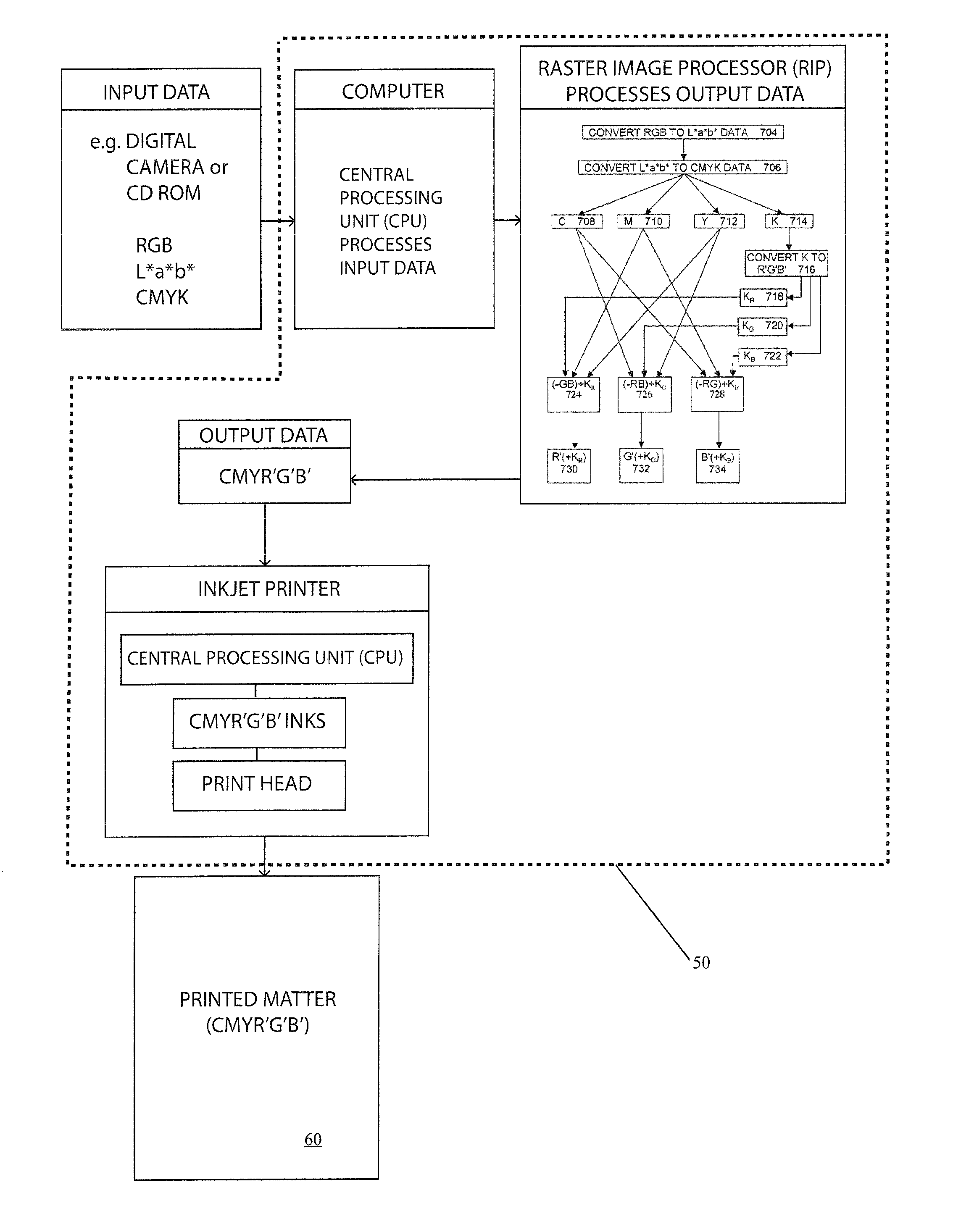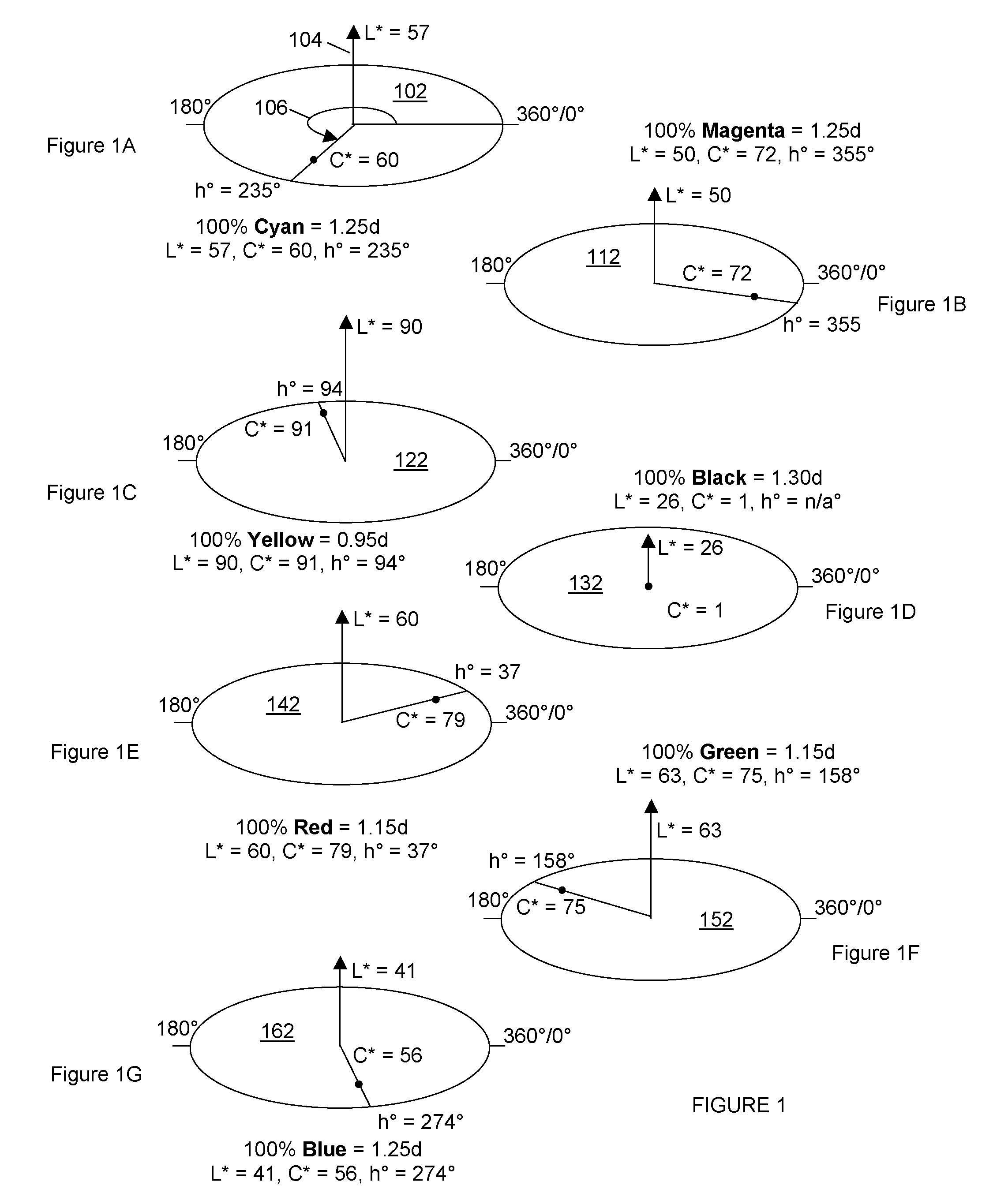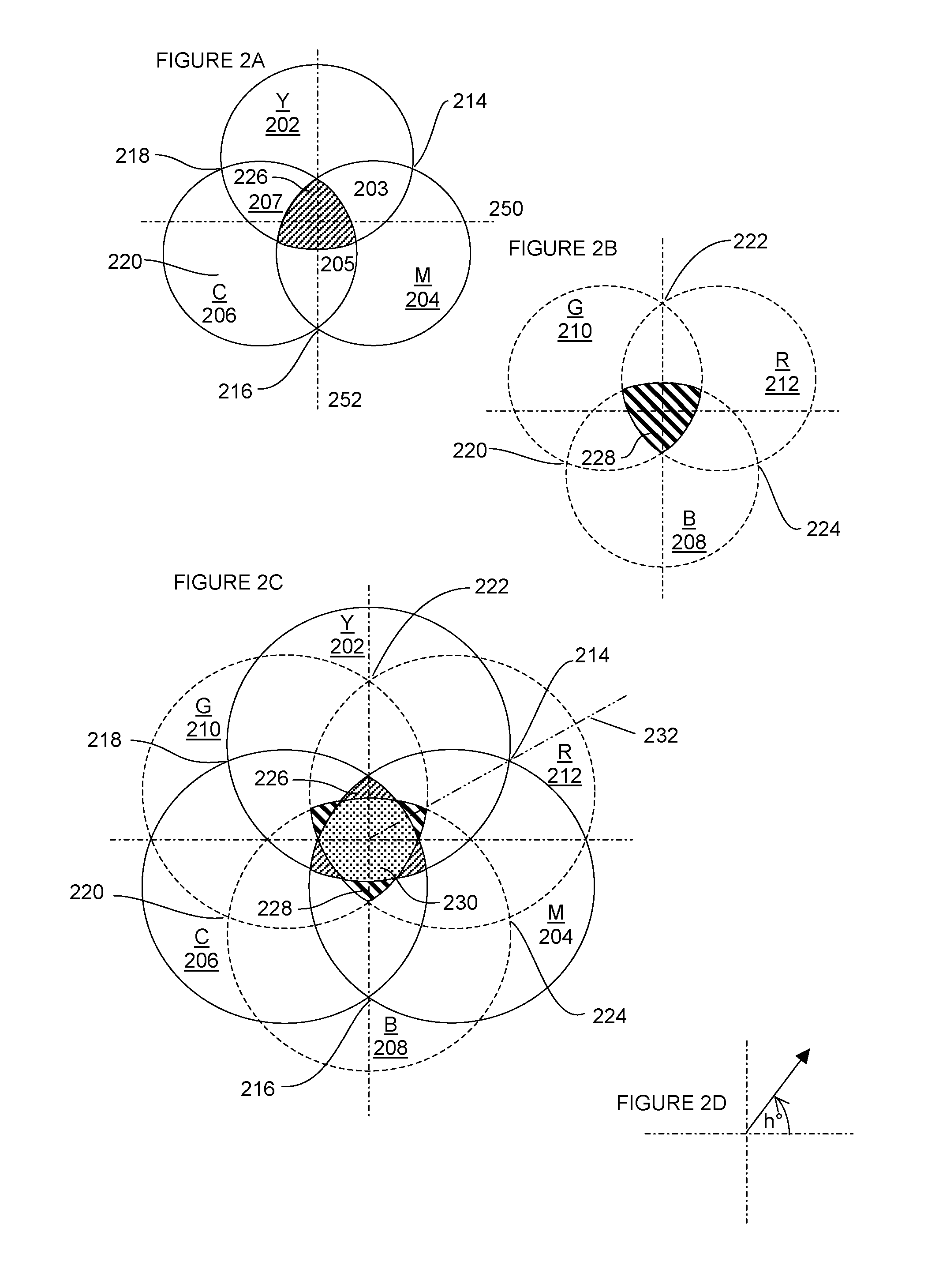Color separation and reproduction method to control a printing process
a printing process and color separation technology, applied in the field of color separation and reproduction in print, can solve the problems of insufficient saturation and high ink density of green and blue hues reproduced with cyan magenta and yellow (cmy) inks alone, and the inability to color separate photographic originals with panchromatic emulsions, utilizing red, green and blue filters, and becoming virtually redundant in the graphic arts industry
- Summary
- Abstract
- Description
- Claims
- Application Information
AI Technical Summary
Benefits of technology
Problems solved by technology
Method used
Image
Examples
Embodiment Construction
[0059]The invention will be described with reference to the embodiments shown in the drawings. Without limiting the scope of the invention, the computerized method disclosed herein is applicable, at a minimum, to printing processes controlled, at least in part, by a computer processor. The computer processor may be any type of software driven device known in the art, including but not limited to raster image processors.
[0060]The improving speed of computers and the development of International Color Consortium (ICC) profiles according to the International Organization for Standardization (ISO) standard—ISO 15076, enables a process according to an embodiment of the present invention to be implemented by applying a series of ICC profiles and suitable color data conversion techniques to RGB, L*a*b* and CMYK color separation data to selectively or simultaneously create Red, Green and Blue (R′G′B′) color separation data channels representing a saturation image which can be used to comple...
PUM
 Login to View More
Login to View More Abstract
Description
Claims
Application Information
 Login to View More
Login to View More - R&D
- Intellectual Property
- Life Sciences
- Materials
- Tech Scout
- Unparalleled Data Quality
- Higher Quality Content
- 60% Fewer Hallucinations
Browse by: Latest US Patents, China's latest patents, Technical Efficacy Thesaurus, Application Domain, Technology Topic, Popular Technical Reports.
© 2025 PatSnap. All rights reserved.Legal|Privacy policy|Modern Slavery Act Transparency Statement|Sitemap|About US| Contact US: help@patsnap.com



